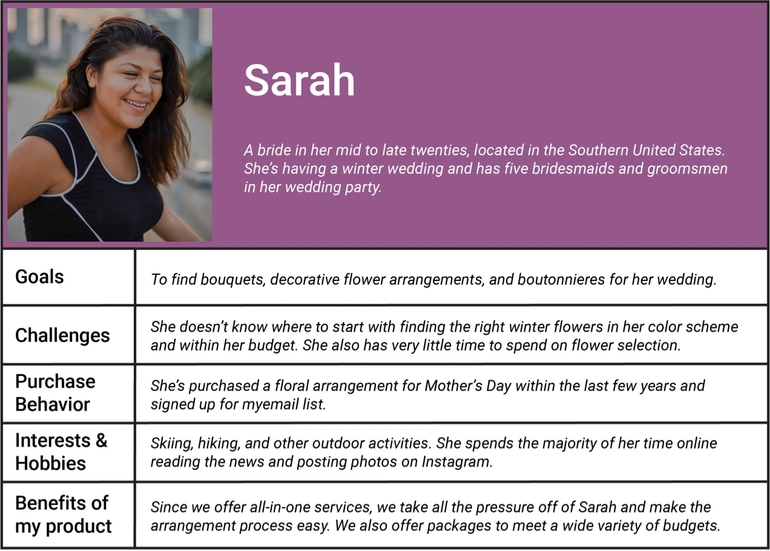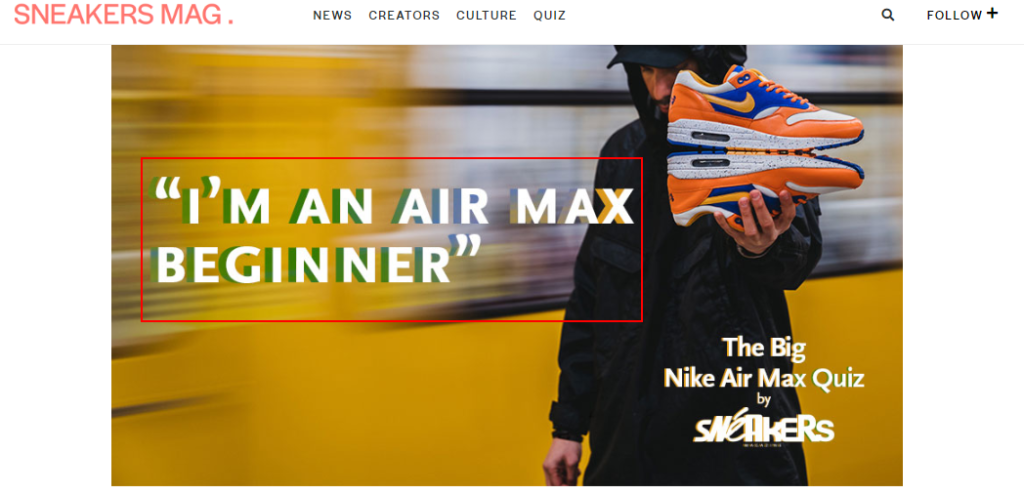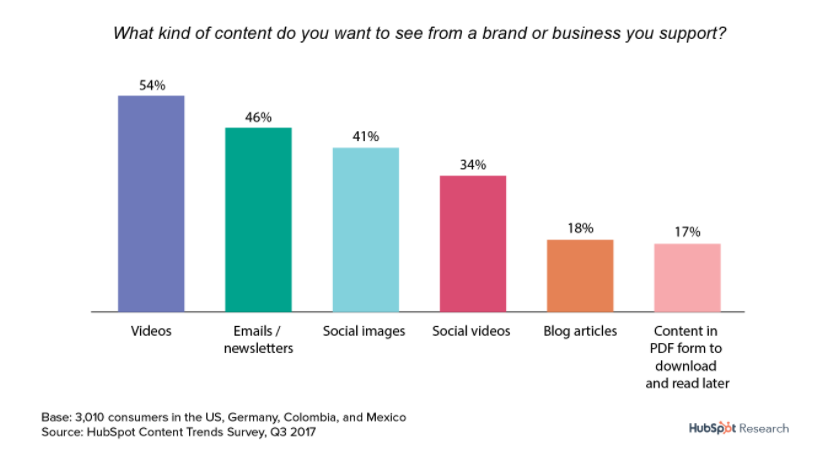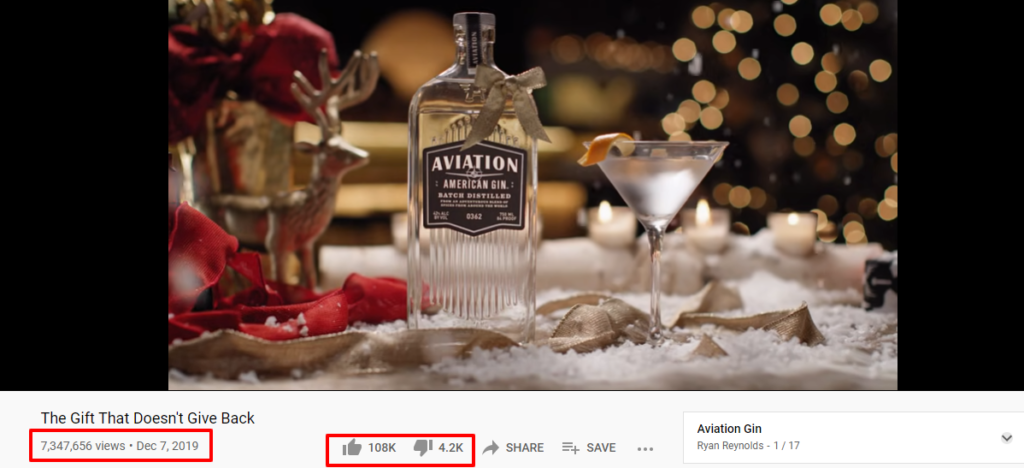With an estimated 53.6% of the world’s population active on social media, it’s no wonder small, and big corporations alike are scrambling for a piece of the social media marketing cake.
And every marketer is working at full-throttle to create viral social media campaigns.
What exactly is viral social media marketing (SMM), and why is it gaining so much traction?
Virality refers to a piece of content spreading far and fast.
If you craft your content well, your audience can’t resist sharing it. After all, it is excellent content that leads to virality.
Therefore, viral social media marketing is the practice of creating content designed to go viral.
So, how do you create a viral social media marketing campaign?
Here are nine steps you can take to ensure the content you create for your social media channels goes viral:
In this article
- 1. Determine Your Purpose for Going Viral
- 2. Understand Your Audience Demographics and Psychographics
- 3. Focus on the Platforms Your Target Audience Frequents
- 4. Conduct Competitor Analysis
- 5. Create Content Your Audience Will Love
- 6. Design a Social Media Video Marketing Strategy
- 7. Extend Your Reach with Influencer Marketing
- 8. Run Free Giveaways, Contests, and Competitions
- 9. Have A Clear Call To Action (CTA)
- Viral Social Media Campaigns – Go Ahead and Engineer Yours
1. Determine Your Purpose for Going Viral
Before you create and launch your viral social media marketing campaign, you must determine why you want to go viral. Having a reason for going viral will help you set goals and metrics for your campaign. For example:
- If the reason for going viral is to raise brand awareness, you’ll set a goal for the number of impressions you’ll consider a success.
- If you’re looking to drive sales, you can set a target for the revenue you want to generate from the campaign.
- If you’re running a viral campaign to generate leads, you can set a target for the number of leads you hope to generate.
The purpose, goals, and metrics you determine for your social media campaign all help you keep track of the progress of your campaign. You can also use the data you collect from monitoring your campaigns to see how to reduce your bounce rates and increase engagement.
2. Understand Your Audience Demographics and Psychographics
The first step to creating viral social media marketing campaigns is to understand your audience.

As a marketer seeking virality, there are two types of audience data you must collect and use in creating your campaigns:
- Demographic data
- Psychographic data
Let’s take a brief look at each and see how they can help you create a viral social media marketing campaign.
Demographic Data
Demographic data primarily deals with external and physical factors that influence your audience.
These are factors such as (among others):
- Geographical location
- Occupation
- Age
- Gender
- Ethnicity
For a long time, demographic data has been one of the primary ways marketers have used to segment their audiences. However, there are many instances where people in the same demographic segment have responded to campaigns in radically different ways.
Why is that?
Demographics are just one side of the coin.
To create a viral social media campaign, you must have the other side of the coin as well.
Psychographic Data
Psychographics focuses on collecting and analyzing audience data that is more intangible. It’s data that focuses on your audiences psychological factors such as their:
- Motivations
- Beliefs
- Interests
- Aspirations
- Values
Psychographic data is powerful because it usually indicates the underlying reason your audiences decide the way they do.
Understanding your audience demographics and psychographics is crucial as it will help you create more fine-tuned segments. Consequently, it will help you craft more personalized content — content your audience will resonate with and share with their network.
3. Focus on the Platforms Your Target Audience Frequents
The next step to creating viral social media marketing campaigns is understanding the platforms most frequented by your audience. That’s because there are hundreds of other social media platforms apart from giants like Facebook, Instagram, Twitter, and the other more common ones. While everyone generally uses some platforms, others are more niche and target a particular demographic.
Knowing which platforms your target audience prefers will help you:
Create Tailored Content
Every social media platform has a preferred content format. For example, YouTube focuses on video content, while Twitter is a platform for sharing short-form text and video-based content. For your content to have a better chance of going viral, you must understand and apply the best practices for each platform you post on.
Gives You Enough Bandwidth
Running SMM campaigns on every platform available can only result in ineffective campaigns. That’s why you must only focus on platforms that matter — platforms your target audience patronizes. This will ensure you have enough bandwidth to create quality content for each platform. However, even managing a couple of os social media platforms can be a daunting task.
Allows You to Optimize for the Platform’s Best Practices
Another crucial reason you must narrow down the number of platforms you’re active on is that it allows you to craft your posts according to each platform’s best practices. This is essential as doing so results in the platform’s algorithm favoring your content and showing it to a wider audience.
To create a viral social media campaign, you must understand the platform and its users. If you can create content optimized for both, you’re well on your way to virality.
4. Conduct Competitor Analysis
Need help in creating viral SMM campaigns?
Your competitors can help you with that.
Well, not directly. You can study your competitors’ SMM campaigns and gain insight into the attributes of viral content. Examples of the insights you can get from conducting competitor analysis include:
Trending Keywords and Hashtags
Going viral on social media is largely dependent on your content being discoverable. For that to happen, you must know the keywords and hashtags that are trending in your niche. Checking out your competitors’ posts is one way of doing this.
Type of Content that Drives Engagement
Another reason to conduct competitor analysis is that it helps you know what kind of content drives engagement. The point is not to copy their content. Instead, it’s to discover conversations your audience is interested in having. You can then join the conversation or start your own conversation around those topics. You can also apply the newsjacking technique and ride on the wave of trending topics.
Content Formats That Work (and Those That Don’t)
While some social media platforms are homogenous in the type of content you can post, others (like Facebook, LinkedIn, YouTube, and it’s alternatives) allow you to post different content formats. In such cases, knowing which formats are preferred by your audience is crucial to your campaign going viral. For example, does your audience like video or text? Or do they prefer images? An easy way to find out is by checking the content formats that drive the most engagement in your competitors’ campaigns.
How they Promote their Posts
How do your competitors drive views and engagement on their posts?
Do they rely on organic traffic, or do they leverage paid marketing to extend their reach? The answer to this will help you optimize your promotion strategy and increase your chances of going viral.
Competitor analysis is a critical step you must never overlook when planning a viral social media marketing campaign. Not only will it help you know what works, but you’ll also get to see some pitfalls to avoid.
5. Create Content Your Audience Will Love
All viral social media marketing campaigns have one common thread — they feature content loved by the intended audience.
This means your content must be about your audience, not your brand.
Let’s be honest here — every human being is self-centered. We primarily concern ourselves with things that are about us. That’s why people tend to engage with and share content that touches them on a personal level.
While it may not be easy knowing what kind of content will go viral, there are three main categories of content with high chances of virality.
Interactive Content
Interactive content is any content that encourages your audience to engage with it as opposed to passively consuming it actively. Examples include quizzes, videos, polls, assessments, and more.

People love interactive content. Not only will they engage with it, but the chances of them sharing it with their network are high. So, invest in interactive content as part of your viral social media campaign strategy.
Inspirational Content
An essential ingredient going viral on social media is to create inspirational content. This is content designed to help your audience become a better version of themselves. It’s personalized motivational content.
Emotional Content
Whether you’re in B2C or B2B, emotions play a huge role in effective marketing. Regarding SMM and creating viral social media campaigns, you must create content that tugs at your audience’s heartstrings. Emotions elicit a response and encourage your audience to take action faster.
Intellectual Content
If your demographic is primarily made up of knowledge buffs or you’re in a knowledge-intensive industry, you’ll need intellectual content to go viral. This can be anything from trivia to tutorial-based posts.
When it comes to creating content for your SMM campaigns, you must always make sure your audience comes first. Favor human-centric content over brand-centric content, and you’ll enjoy higher engagement rates.
Creating social media content your audience loves is essential as it can drive your lead generation. Using a combination of email list-building tools and social media, growing your email list couldn’t be easier.
6. Design a Social Media Video Marketing Strategy
Video has fast become the most preferred content format. With research showing that 54% of consumers saying they would like to see more video content from brands, you have no choice but to listen.

That’s why you must design a video marketing strategy specifically for social media.
To do that, find a concept your audience will love and turn it into an entertaining or informative video using video marketing tools. A few tips to help you do that include:
Choose Your Video Types
There are many video types you can use to drive your viral social media marketing campaigns. Here are a few examples you can consider using:
- Behind-the-scenes
- Educational
- Interviews
- Reviews and case studies
- Product launch
- Humorous
- User-generated
Be sure to study the guidelines of each platform regarding video content and optimize for them. If using
Use Relevant Visuals
For your videos to go viral, use images and footage your audience relates to or resonates with. Aviation Gin’s video campaigns are some of the best examples of how viral video marketing campaigns are made.

One reason their videos do so well is that they’re tailored to appeal to their audience. Another reason is that they stir up controversy by making parodies of other brand’s trending videos.
Don’t be afraid of letting your creative juices flow freely when creating videos for social media. Your audience is tired of the same bland video content — give them something unique to talk about.
Caption All Your Videos
Some people prefer to consume video content on mute. That’s why you must make sure to caption all your videos. Apart from that, captioning also helps ensure your videos are accessible.
Design Attractive Thumbnails
Most people scroll through their feeds and only stop to pay attention to posts that catch the eye. That’s why you must carefully design your video thumbnail. While most platforms add a default thumbnail to a video when you upload it, it’s advisable to create custom ones.
7. Extend Your Reach with Influencer Marketing
Remember, for content to go viral, it must reach a broad audience. One way of doing this is by going beyond your network and tapping into a more extensive network.
The best way to do that is to find an influencer in your niche who can help promote your posts. For this strategy to be effective, you must know what to look for in an influencer. That’s because a large following doesn’t necessarily mean an influencer will help you meet your marketing goals.
So, what must you look for in an influencer?
Relevance
The first thing you must do is to look for an influencer whose personal brand is relevant to your corporate brand. This is an influencer whose audience matches your own. Not only must you share the same audience, but the main theme of their content must be similar to the content you share organically in your feeds. Doing so will ensure that when your influencer of choice shares your content, it fits in with what their audience expects of them.
Engagement
The value of an influencer lies in the amount of engagement they generate on their posts. This is an indicator of the level of engagement you can expect when they share your posts. It’s always better to work with a micro-influencer with an engaged audience than a macro-influencer with a disengaged audience.
A well-crafted post plus a well-targeted influencer is the perfect recipe for a successful viral social media marketing campaign. Once you’ve created your posts, extend your reach and drive engagement by partnering with an influencer.
8. Run Free Giveaways, Contests, and Competitions
Everyone loves free stuff.
That’s why giveaways and contests are the best fodder for viral social media marketing campaigns.
Don’t worry. Setting up such promotions doesn’t have to be complicated.
You can start by rewarding your users for taking simple actions like engaging with your content.
With Woorise, creating viral giveaways and contests is super easy and effortless.

While it may look like a loss on your end, it is a win-win for you and your audience. Your audience benefits from your prize while you benefit from:
- Boosting brand awareness as more people participate in the competition.
- Gaining more followers as people follow your action-packed contest.
- Get feedback and reviews from participants, thereby enhancing social proof.
- Generating leads and driving sales.
If running contests and giveaways sounds like something you’d want to include in your social media campaigns, here’s a list of 100+ best prize ideas you can use.
9. Have A Clear Call To Action (CTA)
What do you want your viral social media marketing campaign to achieve?
What action do you want your audience to take?
Successful social media campaigns clearly communicate what action the audience should take next.
Without a clear call to action, the time, money, and energy you’ve invested in creating the campaign goes to waste.
So, create a short, clear, and alluring CTA for each social media marketing campaign.
An excellent example of an alluring Call To Action is telling people to click a particular link to get; gifts, free training, or e-Books, redeem steeply discounted offers, among others.
Viral Social Media Campaigns – Go Ahead and Engineer Yours
Virality on social media is not purely a matter of luck.
You can engineer it.
Use the nine steps outlined above to create your next viral social media marketing campaign. With the right content, posted on the right platform, and by partnering with the right people, you’re bound to succeed.



